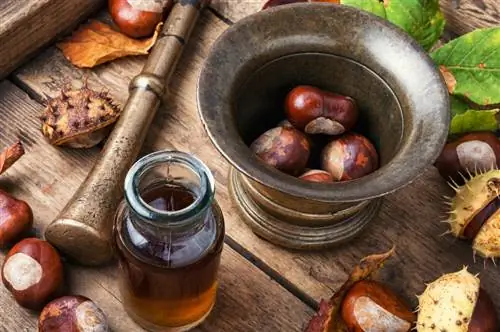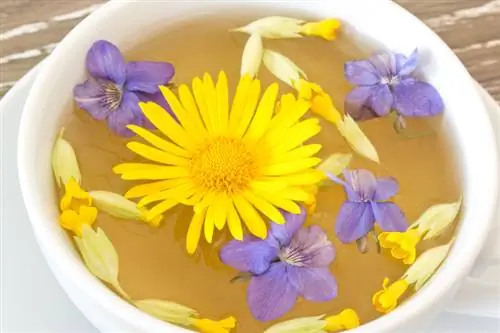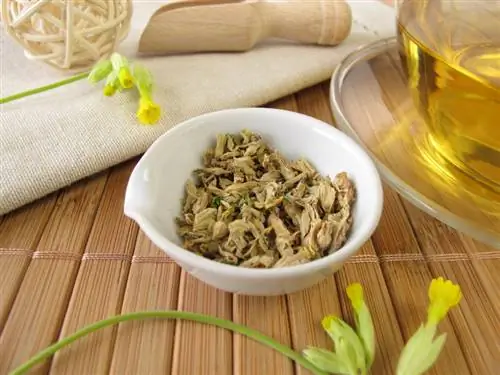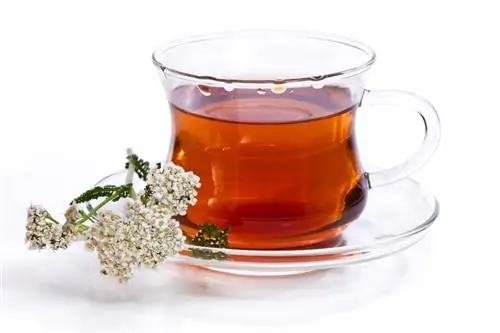- Author admin [email protected].
- Public 2023-12-25 17:45.
- Last modified 2025-01-23 11:22.
The local horse chestnut delights young and old in autumn. Its shiny brown seeds are not only suitable for crafts and autumn decoration, but also have healing effects. In this article you can read how chestnuts can be used.

What effects does the horse chestnut have?
The effect of horse chestnut is based on its main active ingredient aescin, which has a positive effect on the vascular system, especially the veins. Horse chestnut can relieve venous weakness, swollen feet, heavy legs, feelings of tension, varicose veins, edema, itching and nighttime leg cramps.
What active ingredients does horse chestnut contain?
The main active ingredient in the seeds of the horse chestnut is the so-calledAescin, a saponin mixture. Thanks to its special properties, the seeds in particular are used medicinally. In addition, the seeds contain tannins, flavonoids and starch.
How does the horse chestnut work?
The active ingredients in horse chestnut affect the entirevascular system of the body, especially the veins. The aescin it contains seals vessel walls and thereby prevents water retention during movement. Overall, horse chestnut promotes blood circulation in the veins and has a slight anti-inflammatory effect.
What complaints does horse chestnut help with?
Horse chestnut is particularly helpful for venous insufficiency, but has a positive effect on all blood vessels. The following symptoms can be alleviated:
- swollen feet
- heavy, tired legs
- Feeling of tension in the calves
- Varicose veins
- Edema (water retention)
- Itching
- night leg cramps
In addition, the horse chestnut is also said to provide relief for bruises, bruises and bruises. It can also be found as an ingredient in shampoos against hair loss. It should be noted that horse chestnut can only relieve mild symptoms and is used to support other therapeutic measures such as compression stockings. Treatment should always be discussed with a doctor.
How is horse chestnut used?
The extract obtained from the seeds of the horse chestnut is used inherbal remedies such as tablets, ointments, drops or creams. It is also used in homeopathy. The unprocessed seeds and other components of the plant should not be used as they contain toxic substances that can increase the risk of bleeding.
What side effects can occur when taking it?
Side effects occur when using horse chestnut extractonly rarely. When used externally, itching can occur, taking internally can lead to nausea and stomach problems.
Tip
Horse chestnut as sun protection
The bark of the horse chestnut contains aesculin, a glucoside capable of binding ultraviolet radiation. With this property, aesculin is sometimes used in sunscreens.






